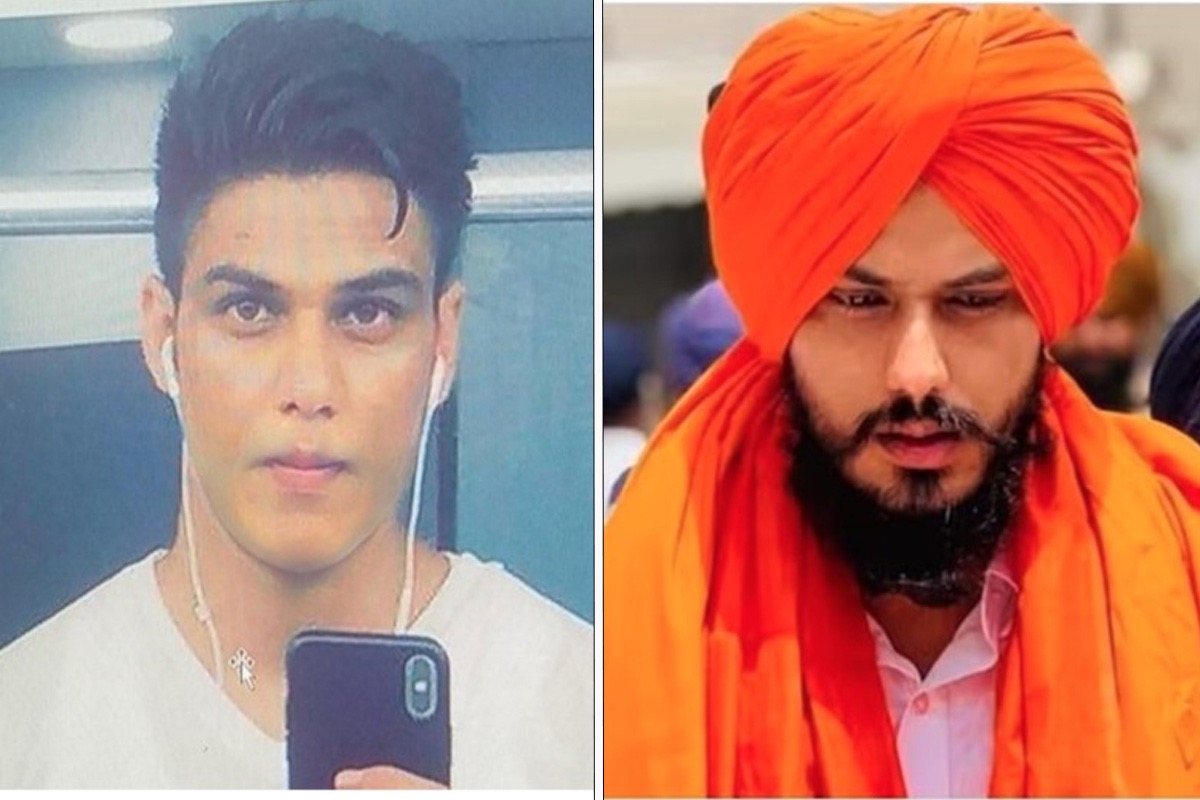A 30-year-old man returned to Punjab in August 2022 after working in transport sector for nine years in Dubai. Within six months, he transformed himself into a radical Sikh leader emulating Bhindranwale and became so powerful in Punjab’s religious politics that he along with his supporters stormed a police station and forced cops release their comrade – a man accused of abduction.
Just a few months before his arrival, Amritpal Singh had no long beard and was not even a full-fledged practising Sikh. He became Amritdhari at a ceremony at Aanandpur Sahib on September 25, 2022. Four days back, thousands of Sikhs gathered to witness his ‘Dastar Bandi’ (turban-tying ceremony to indicate the taking on of a responsibility) at Bhindranwale’s village, Rode.
Amritpal is today so popular among extremists in Punjab that when the police launched a massive crackdown on his pro-Khalistan ‘Waris Punjab De’ by arresting hundreds and recovering a huge cache of arms and ammunition, protests broke out not only in Punjab, but also in some cities abroad. Khalistani supporters vandalised the Indian High Commission in London and pulled off Tricolour on reports of his arrest.
Amritpal’s modus operandi is similar to that adopted by Bhindranwale. One of them is to attack the police by using religious symbols as shields.
This is the story of Amritpal Singh everyone is by now aware of. But the question remains: how did this radical Sikh manage to attract such a large number of followers in such a short span of time that has emerged as the largest threat to Punjab’s peace today?
Punjab has been peaceful for more than two decades due to several factors such as police crackdown on separatists, factional infighting among extremists, and disenchantment within the Sikh community – which has seen bloodbath and turmoil caused by Khalistani terrorists.
Sidelined for years, radical elements in Punjab have been trying to make a comeback over the last decade, trying to ride on public disaffection with mainstream regional and national political parties, and mobilizing the Sikh diaspora abroad.
For many years, several Khalistani organisations such as Sikhs for Justice (SFJ), Babbar Khalsa International, and the Khalistan Liberation Force (KLF) made all-out efforts to gain foothold in Punjab – the state they demand to be carved out of India to make a new country exclusively for Sikhs, but achieved little success.
But funding for the cause and propaganda have again gained traction in Punjab where organizations, such as the Dal Khalsa and Damdami Taksal, have kept the Khalistan issue alive even after the armed Sikh uprising was wiped out in the mid-1990s.
Radical Sikh elements within the Indian diaspora have found the permissive political climate in Canada, North America, and Europe conducive to building a support base in their respective countries, while donations from gurdwaras abroad and social media propaganda have fuelled separatist efforts in Punjab.
To make the matters worse, successive state governments have time and again tried to pander to the Sikh extremists to further their own political agenda and for electoral benefits.
In 2014, the Damdami Taksal built a memorial within the Golden Temple premises for Bhindranwale and other militants killed during Operation Blue Star. Today, a visit to the Golden Temple is considered incomplete without a stop at the memorial, which is situated next to the Akal Takht, the highest seat of Sikh temporal power.
In 2015, then Punjab deputy chief minister Sukhbir Singh Badal accused the Congress of supporting radical organizations that favored the creation of Khalistan. He alleged that Congress formed a grand alliance with terrorist organizations, which were behind Amritsar’s 18,000-strong ”Sarbat Khalsa” gathering which passed a resolution naming terrorist Jagtar Singh Hawara, convicted of killing former Punjab CM Beant Singh, as the chief priest of the Akal Takht – the highest temporal seat of Sikhs.
The same year witnessed massive protests across Punjab over an incident of desecration of Sikhs holiest text – Guru Grath Sahib. Several such incidents were reported over the years and the government’s failure to bring perpetrators to justice fuelled public anger. The anger was so much that it became a major issue in the last assembly election. The Congress government – under whose rule several such incidents were reported – was wiped out.
In May 2022, famous Punjabi singer Sidhu Moose Wala was gunned down in broad daylight and a Rocket-Propelled Grenade (RPG) was fired at the Punjab Police’s Intelligence headquarters in Mohali. In December, another rocket was fired on a police station in Tarn Taran district. In the same year, two renowned Kabaddi players Sandeep Singh and Dharmender Singh were murdered. In ensuing action, police recovered explosive devices and explosives across the state.
Today, Punjab seems to be heading back to square one. Law and order situation is in such a poor state that radical elements not only publicly chop off fingers of a man, but also record the act and circulate it on social media with impunity.
The current Bhagwant Mann government has not been able to establish law and order and is finding it challenging to curb the increasing violence and religious fanaticism in Punjab.
The victory of Khalistan sympathizer Simranjeet Singh Mann in the Lok Sabha polls from Sangrur constituency indicates that separatist sentiment is once again gaining prominence in Punjab. Actor Deep Sidhu, who founded ‘Waris Punjab De’ and inspired Amritpal to join the movement, had openly campaigned for him in the elections. The MP defended Amritpal against the police action.
Punjab is home to three million drug addicts (over 15% of its population), according to a 2022 survey. The Magnitude of Substance Use survey in 2019 counted 40 lakh drug users in the state. As per reports, there are 70 gangs engaged in contract killings, extortion, and kidnapping. Despite promises by two successive governments, there is 16 per cent unemployment after higher secondary education in the state.

